Although yesterday saw the announcement of an x86-based Arduino powered by an Intel chip. This may have not been the big story to come from [Massimo] at Maker Faire Rome. Announced along with the x86 Arduino Galileo was the Arduino TRE, a collaboration between Arduino and the BeagleBoard foundation.
The TRE is really two Arduinos in one: in the center is basically an Arduino Leonardo with the standard Arduino headers and an ATmega32u4. Elsewhere on the board is a TI Sitara ARM Cortex A-8 processor running at 1GHz with 512 MB of RAM, 10/100 Ethernet, HDMI out, USB host and device ports, and a bunch of connectors intended for an LCD and a ZigBee.
There is, of course, the obvious comparison between the TRE and Raspberry Pi. Hardware-wise, the TRE is very close to the BeagleBone Black, a bit more powerful than the Raspberry Pi, and able to do some very cool stuff (i.e. OpenCV) the Pi just can’t handle.
There is – I think – no official price for the Arduino TRE quite yet. It will be available in spring, 2014, though. You can check out all the press release photos in the gallery below.

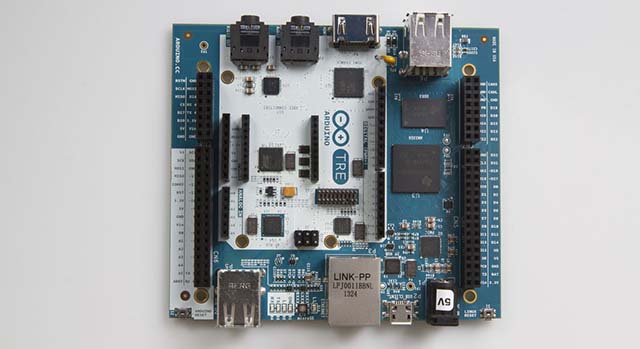
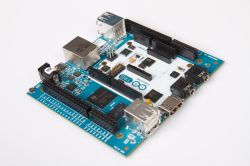
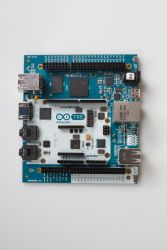
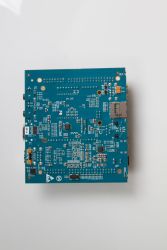
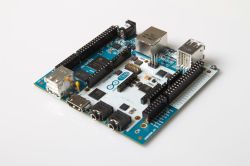














This is a lot more sensible than the Intel thing. Would have been nice to drop the AVR and do its stuff in the PRUs instead though.
It’s getting to the point where emulating an AVR chip is faster and cheaper than the real thing. They could have made a virtual software arduino and cut down on the cost a lot.
I’ve not seen any ARM chips emulating AVR, Can you provide a source?
ARM avr emulation == C avr emulation/
https://gitorious.org/simavr
Emulating it on a full-blown OS is going to be problematic since you can’t guarantee accurate cycle timing
That’s why you would use the PRUs to do the low level grunt work. If the arduino stuff can’t target the PRU directly (no c compiler yet AFAIK) you could emulate most of the AVR in the PRU and have some glue running on Linux to make it accessible.. Or do some sort of avr to pru machine code translation. :-)
I’m curious, have you ever personally programmed the PRU, even for something so simple as blinking an LED?
My educated guess is that emulating the complete AT part, especially the peripherals, would probably not be possible using the PRUs. Unless an emulation is perfect or very close to perfect then it’s usefulness is be limited. Can you imagine the complaints from the community if there were all kinds of problems with existing Arduino libraries? Having had experience creating cycle-accurate simulations, it’s probably a much better engineering solution from a functionality and time-to-market perspective to spend a few extra bucks on the real deal.
I don’t think you know what you’re talking about, the PRU’s instruction set isn’t even a complete micro. Also this ties all future processors to TI’s specific not super well supported peripheral.
“I’m curious, have you ever personally programmed the PRU, even for something so simple as blinking an LED?”
Yes Paul I have used the PRU .. I’m using it to drive RGB led strips and I use it for part of a test jig for some mc68000 boards. It could be used to implement a lot of the hardware features of the AVR.
“I don’t think you know what you’re talking about , the PRU’s instruction set isn’t even a complete micro.”
What is a “complete micro”? A single instruction machine can be Turing complete.
“Also this ties all future processors to TI’s specific not super well supported peripheral.”
The the hardest thing with using the PRU was getting the kernel interface to load correctly so I could upload code. The assembler etc are open source. TI might change the PRU in the future like the BBB PRUs don’t have ethercat or something but I think you’re worrying a bit too much.
i couldn’t agree more about the PRU. dual 200MHz PRU processors could easily trump the AVR. as the software resources for pru get better, the AVR may become obsolete.
It’s 2013 and we still can’t standardize our power connectors, in fact we still have to put little labels on them so we don’t plug in the wrong thing.
You’d think and hope that this Italian device would be forced to comply with EU directives and use a micro-USB power source.
Or maybe the Arduino people have a vested interest in littering the planet with cheap power bricks?
That’s an interesting point. I think it more has to do with the Arduino ecosystem. I believe there are a lot of those 9V-to-barrel-jack connectors out there for boards that have a regulator on them. That’s why they had to label this.
I’d prefer the microUSB just because there are a lot of wall warts that claim they’re 5V but put out more juice than labelled.
If it’s Beaglebone based, the USB port can be used as the main power source.
I’m sure it works with either.
Personally, I’m not a fan of either anyway. Micro-USB is difficult to solder, relatively expensive and way too delicate. Barel connectors pull out too easily. I’d rather just power the thing through the pin headers.
Made in the US, and it’s not a consumer mobile device, so it would not have to comply with that rule anyway.
It looks like the PoE module is missing!
Must… not… buy… yet… another… dev… board…
BTW, how’s handmade copper kettle, however nicely it’s made, related to an Arduino board? (c:
“It will be available in spring, 2014, though.”
I know what this means.. I’ll start looking for it in spring 2015.
I still can’t see the point. Considering the prices of the their current boards this thing will cost in the order of $80 retail. The main advantage of the Arduino line is the combination of an easy to learn/use IDE, libarary & code availability + community support and the [relatively] low price. What does the Tre add to this? It can run Linux, but it is too slow to do actual development on it. You get a much more powerful processor, lots of RAM and flash storage + the capability to use Arduino shields, but why would you want that. The ARM-only boards like the BBB already have the functionality of many shields built-in and have much more GPIO pins for further expansion. If you already have that many “exotic” shields, you likely also have a Pi, BBB, a couple of LaunchPads, Discoveries, Butterflies, etc.
The Atom-duino, on the other hand, has one main advantage – it is can run x86 code. That and it will probably be subsidized by Intel.
Anyway, the spirit of the Uno has been lost. You can no longer use an Arduino to quickly develop a simple project and then buy a bare MCU, a crystal, voltage regulator & a couple of capacitors for $5 total and make your own throw-away “production” board.
precisely my own thought on the issue
*thoughts
“You can no longer use an Arduino to quickly develop a simple project and then buy a bare MCU”
Really? I’m still doing that. Why can’t you?
I keep reading comments that seem to be implying that these new system on a chip boards are here to replace the old microcontrolers. That is absurd!
SoC boards have greater processing power, memory and extra flexibility due to the OS.
Microcontrolers are smaller, cheaper and use less power.
They are apples and oranges. If you are using a SoC for the same project that used to use a microcontroler then you are doing it wrong.
From the Arduino home page:
“The boards can be built by hand or purchased preassembled; the software can be downloaded for free. The hardware reference designs (CAD files) are available under an open-source license, you are free to adapt them to your needs.”
Starting with the Yun, the Galileo and now the Tre, you can no longer built these Arduino boards by hand, nor get the full CAD files because they are encumbered with NDAs (at least for the Yun, we will see what happens with the latter two boards).
Arduino has just lost its soul.
both the Galileo and TRE will be released with full design files under Creative Commons along with Bill-of-Materials. the beaglebone black and ALL of the beagleboard.org products have been that way from day one of their first product release in 2007. while these boards are not easily assembled by hand, both the TRE and Galileo have been designed in such a way that even the most basic assembly shop that can do a BGA package can assemble the boards at a very low cost.
I beg to differ. there’s nothing stopping you from rolling your own tool on perfboard with a bit of jumper wire. You can even etch your own board without buying a silly photoresist kit. Best of all, all of those processes are clearly documented on a hundred different sites, this one included. I don’t understand people bellyaching over the vast panoply of development boards available now. When I first played with PIC chips, I plonked down my fifty bucks for what was, at the time, a shockingly cheap development tool. I felt like that was the height of technological democratization. Even then, though, every manufacturer had a (very pricey) dev board for every chip they made.
Now, in this post-Arduino world, those same dev boards are available for a fraction of the cost. Arduino showed these guys that we don’t expect every peripheral in the world broken out to pricey connectors, and we’re okay with something minimal. Now I can pick up a board from TI, Cypress, Freescale, or anyone and get a feel for the silicon. After that, I can cheaply etch my own boards. I can usually even find someone that’s already made a barebones board and opened their design. All of this would have been incredibly difficult prior to the Arduino.
Just because there are boards that go beyond the original Arduino directive doesn’t mean we have to use them. I even appreciate that they’re there, because documentation and designs from that ecosystem might soon drift into the realm of things I do want and can readily use. Either way, the culture of seat-of-your-pants soldering and minimal design isn’t going away. It’s, arguably, strengthened by things like this.
The point is that you don’t have to port your code over to linux. Just load your old Arduino code on the AVR. Convenience/Laziness
Anyone seen rumors on the expected price?
$124.95 normal
$95.49 student
$85.23 ea for educators (must be bought in quantities of 15 or more)
price for TRE and Galileo have not been officially released as of yet.
With DX.com selling arduino nano clones for $10 with free shipping, I won’t be rolling any new boards by hand once my current stock is depleted *waste of time*
Even worse than that: you can get the same arduino nano clone on ebay for $3.59 with free shipping…
hmm…I didn’t see any there for that price, do you have a link? Thanks!
To me…it’s just going to take more resources away from the DUE development. DUE is a fine board…just needs attention given to the libraries.
The new board has new and improved featured compared for example with Uno, but two of the most important features are the real-time support and the full version of Linux that can run on it. A full overview of what can do this board can be found here http://www.intorobotics.com/short-overview-specifications-arduino-tre/